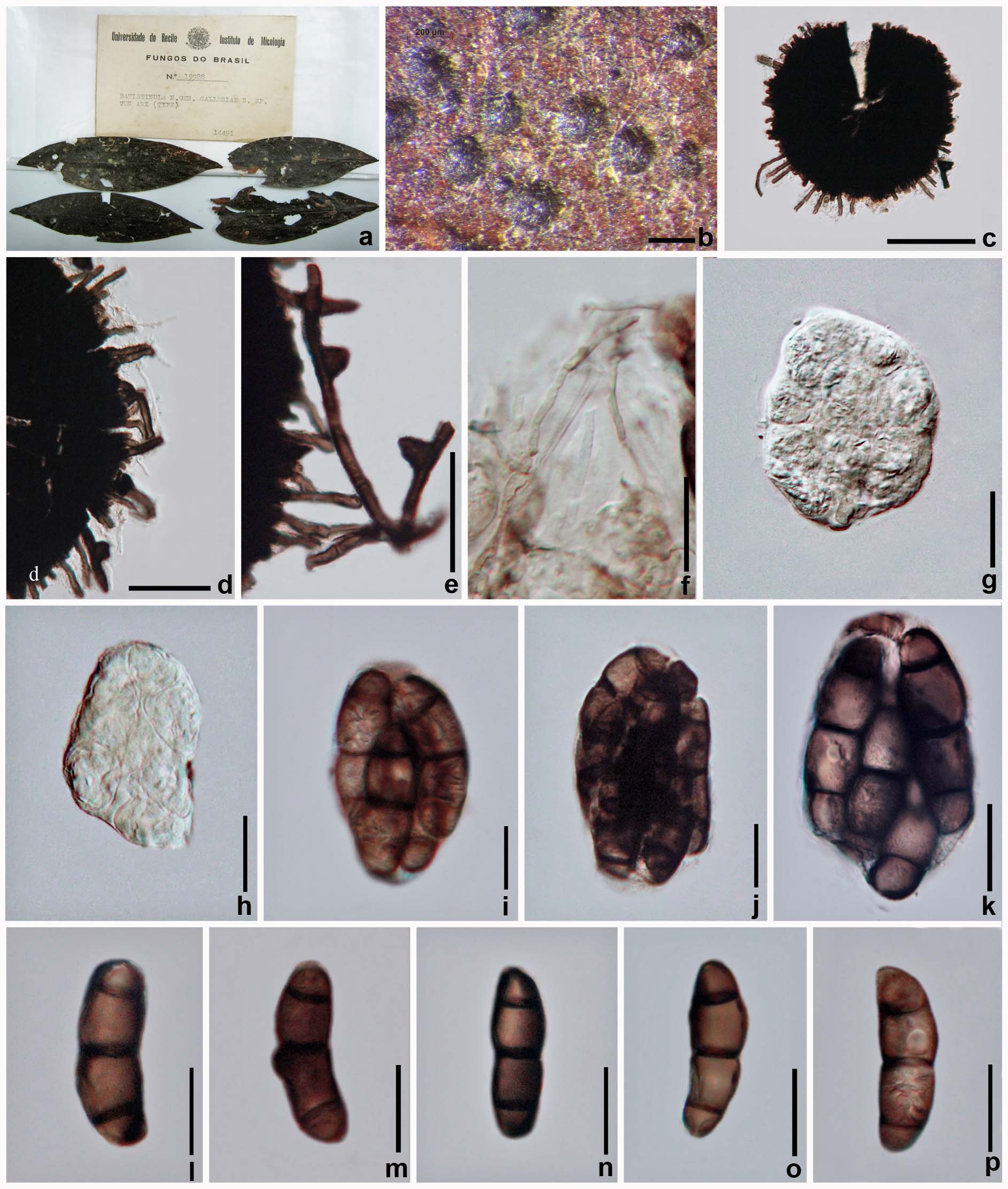Batistinula gallesiae Arx, Publções Inst. Micol. Recife 287: 6 (1960).
Type: URM 19988.
Epiphytes of Gallesia gorazema. Superficial hyphae branched, septate, dark brown, radiating, with conical, lateral appressoria. Sexual state: Thyriothecium 213–240×209– 259μm (x = 231×235μm, n=5), superficial on host tissues, circular, dark brown to black, joined to branching mycelial out the otuside, with a central ostiole. Hamathecium with sparse cylindrical, pale brown, branched, septate, pseudoparaphyses. Asci 56–74×36–53μm (x = 64×43μm, n=10), 8–spored, mostly broadly clavate, somewhat ovoid, with a short pedicle, apically thickened region not obvious. Ascospores 43–52× 13–17μm (x = 46×15μm, n=20), brown, ellipsoid, 3-septate, with smaller ends cells, constricted at the central septum, with attenuate to broadly rounded ends, without gelatinous sheath. Asexual state: Unknown.
Material examined: BRAZIL, Recife, Macacos, on leaves of Gallesia integrifolia (Spreng.) Harms. (as Gallesia
gorazema (Vell.) Moq.) (Phytolaccaceae), 7 August 1960, Oswaldo Soares, 14491, determined J.A. von Arx (URM 19988, holotype).
Fig. 1 Batistinula gallesiae (holotype). a Herbarium package. b Appearance of thyriothecia on the leaf surface. c, d Squash mount of thyriothecia. e Appressoria. f Psuedoparaphyses. g–k Asci. l–p Ascospores. Scale bars: d=500μm, e, f=100μm, g, h=10μm, i=20μm

